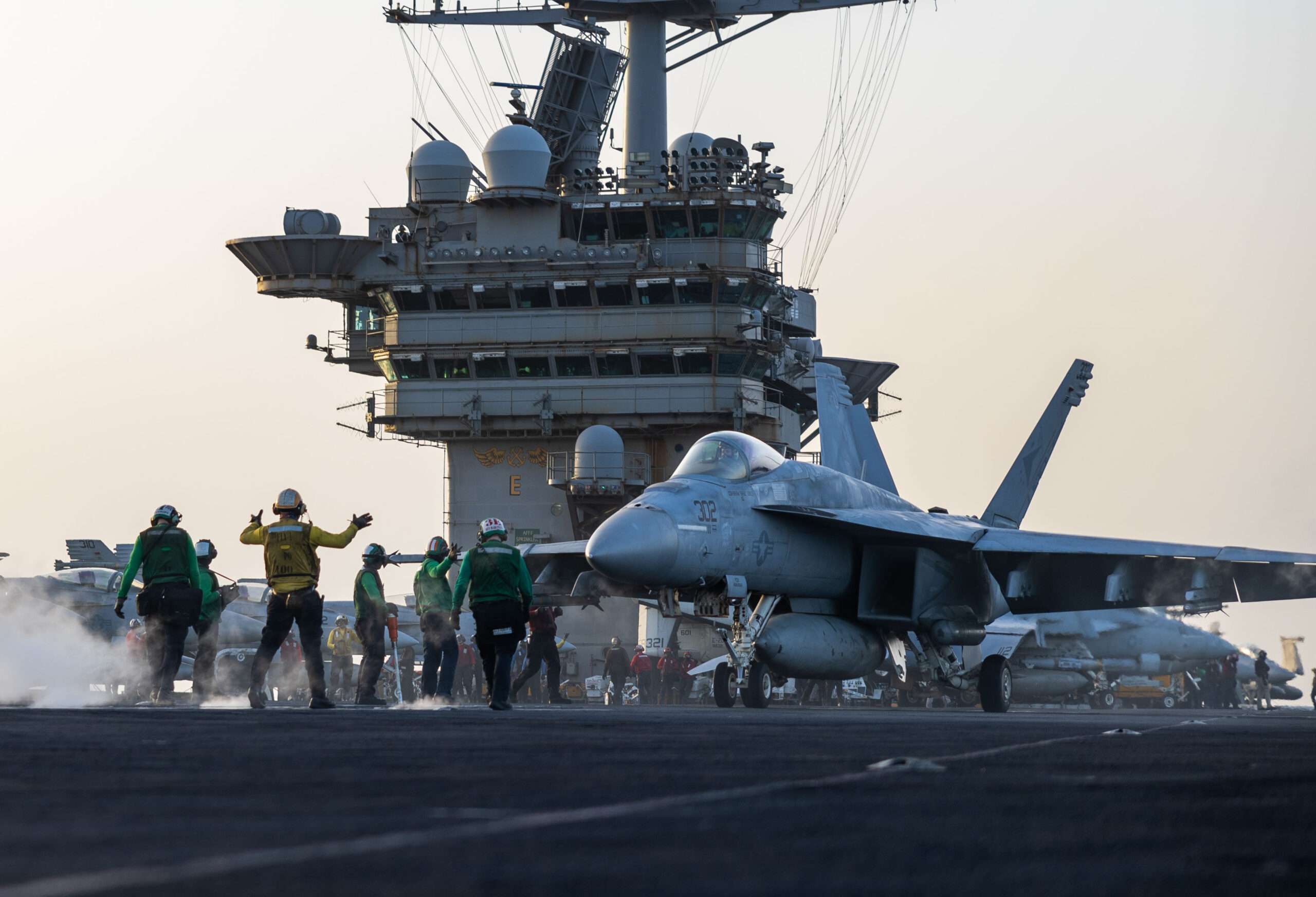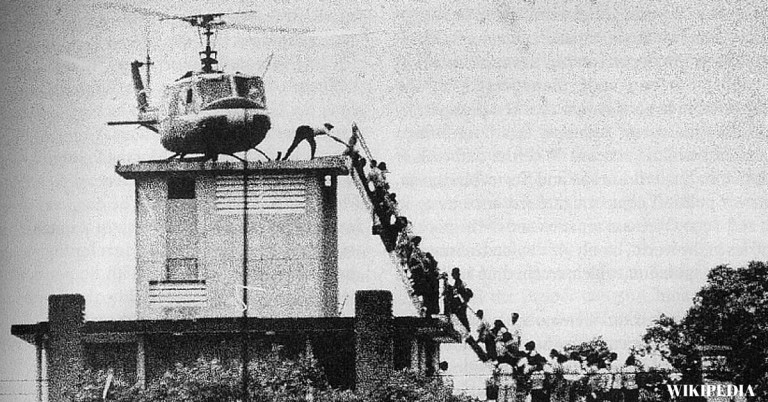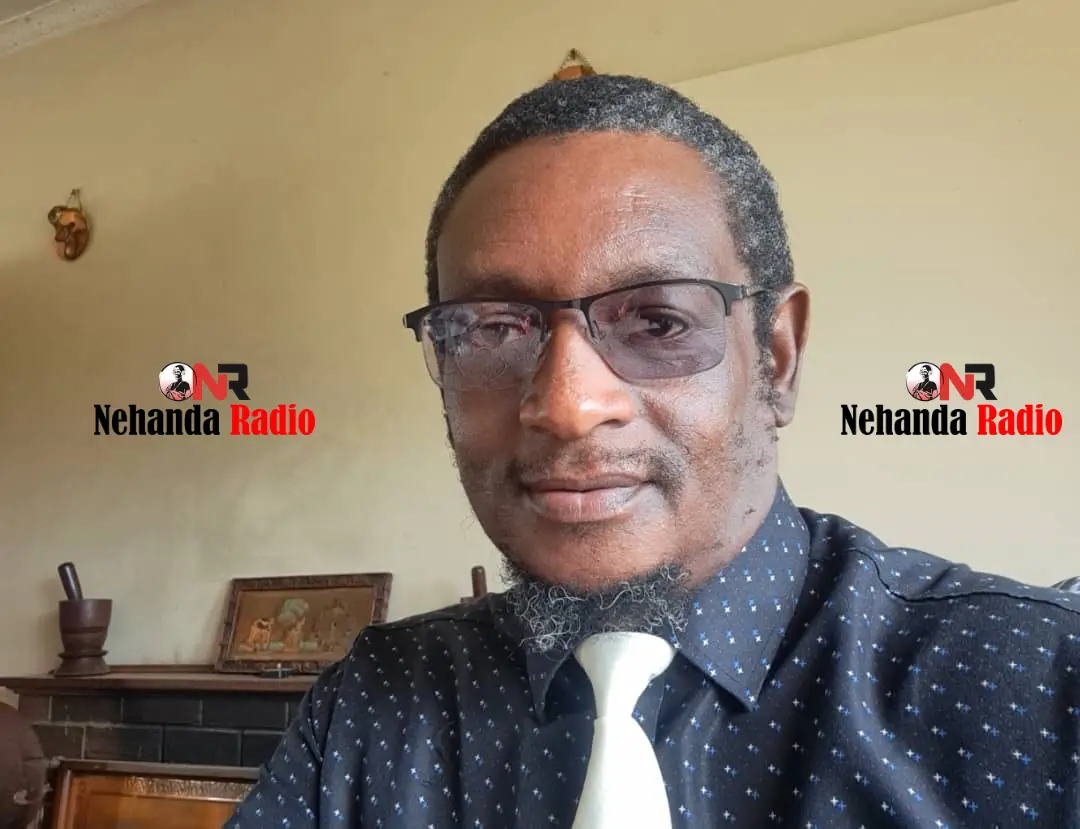How a can of Coke and day-old cake led to iconic photo that went around the world

By 1975, the AP’s bureau had shrunk as well, and as the North Vietnamese Army and its allied Viet Cong guerilla force in the south pushed towards Saigon, most staff members were evacuated. Arnett, Esper and Franjola volunteered to stay behind, anxious to see through to the end what they had committed so many years of their lives to covering – and conspiring to ignore New York if any of their managers got the jitters and ordered them to leave at the last minute. “I saw it from the beginning, I wanted to see the end,” Esper said. “I was a bit apprehensive and frightened, but I knew that if I left, the rest of my life I would have been second-guessing myself.” On April 30, 1975, the monsoon rains had arrived and Arnett watched in the early morning hours from the slippery roof of the AP’s building as helicopters evacuated Americans and selected Vietnamese from the embassy four blocks away. After catching a few hours of sleep, he awoke at 6.30am to the loud voices of looters on the streets. An hour later, from the rooftop of his hotel, he watched through binoculars as a small group of US marines that had accidentally been left behind clambered aboard a Sea Knight helicopter from the roof of the embassy – the last American evacuees. He called it in to Esper in the office, and the story was in newsrooms around the world before the helicopter had cleared the coast. ‘I was thinking in my own mind these are North Vietnamese, there are South Vietnamese, Americans – we’re all the same.’George Esper, AP journalist Franjola and Arnett then took to the streets to see what was going on, while Esper manned the desk. When they got to the US Embassy, a mob of people were grinning and laughing as they looted the building – a sharp contrast to the desperation of people the day before hoping to be evacuated. “On a pile of wet documents and broken furniture on the back lawn, we find the heavy bronze plaque engraved with the names of the five American soldiers who died in the attack on the embassy in the opening hours of the Tet Offensive in 1968,” Arnett recalled in an email detailing the day’s events. “Together we carry it back to the AP office.” At 10.24am, Arnett was writing the story of the embassy looting when Esper heard on Saigon Radio that South Vietnam had surrendered, and immediately filed an alert. “Esper rushes to the teleprinter and messages New York, and soon receives the satisfying news that AP is five minutes ahead of UPI with the surrender story,” Arnett said, citing AP’s biggest rival at the time, United Press International. “In war or peace, the wire services place a premium on competition.” Esper then dashed outside to try and gather some reaction from South Vietnamese soldiers to the news of the capitulation, and came across a police colonel standing by a statue in a main square. “He was waving his arms, ‘fini, fini’, you know, ‘it’s all over, we lost’,” Esper remembered. “And he was also fingering his holstered pistol and I figured, this guy is really crazy, he will kill me, and after 10 years here with barely a scratch, I’m going to die on this final day.” Suddenly, the colonel did an about-face, saluted the memorial statue, drew his pistol and shot himself in the head. Shaken, Esper ran back to the bureau, up the four flights of stairs to the office and punched out a quick story on the incident, his hands trembling as he typed. Stories flow as Saigon falls Back on the streets, Franjola, who died in 2015, was nearly sideswiped by a Jeep packed with men brandishing Russian rifles and wearing the black Viet Cong garb. Arnett then saw a convoy of Russian trucks loaded with North Vietnamese soldiers driving down the main street and scrambled back into the office. “‘George,’ I shout, ‘Saigon has fallen. Call New York’,” Arnett said. “I check my watch. It’s 11.43am.” Over the next few hours, more soldiers, supported by tanks, pushed into the city, engaging in sporadic fighting while the AP reporters kept filing their copy. It was about 2.30pm when they heard the rubber sandals outside the office, and the two NVA soldiers burst in, one with an AK-47 assault rifle swinging from his shoulder, the other with a Russian pistol holstered on his belt. To their shock, the soldiers were accompanied by Ky Nhan, a freelance photographer who worked for the AP, who proudly announced himself as a long-time member of the Viet Cong. “I have guaranteed the safety of the AP office,” Arnett recalled the normally reserved photographer saying. “You have no reason to be concerned.” As Arnett, Esper and Franjola pored over the map with the two NVA soldiers, they chatted through an interpreter about the attack on Saigon, which had been renamed Ho Chi Minh City as soon as it fell. The interview with the two soldiers turned to the personal, and the young men showed the reporters photos of their families and girlfriends, telling them how much they missed them and wanted to get home. “I was thinking in my own mind these are North Vietnamese, there are South Vietnamese, Americans – we’re all the same,” Esper said. “People have girlfriends, they miss them, they have the same fears, the same loneliness, and in my head I’m tallying up the casualties, you know nearly 60,000 Americans dead, a million North Vietnamese fighters dead, 224,000 South Vietnamese military killed, and 2 million civilians killed. And that’s the way the war ended for me.” The Business Briefing newsletter delivers major stories, exclusive coverage and expert opinion. Sign up to get it every weekday morning.


















